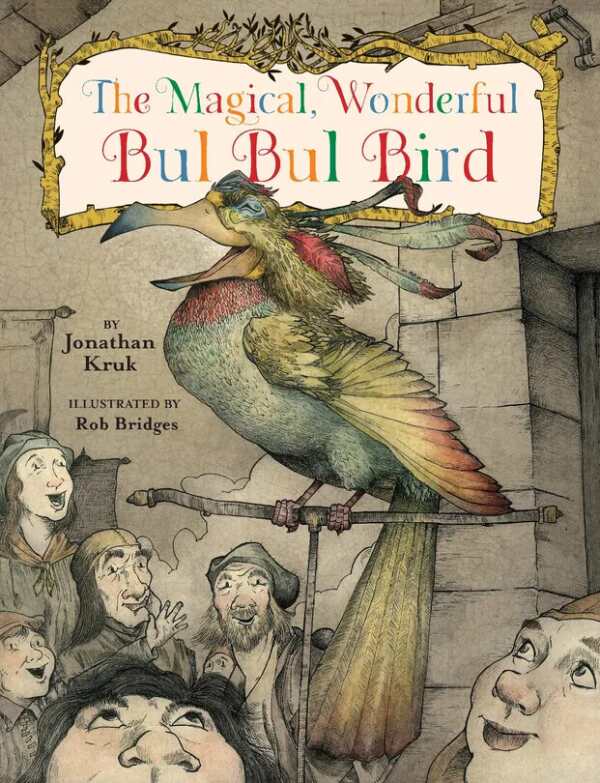The Magical, Wonderful Bul Bul Bird
A wise princess strives to listen to the advice of others and extend kindness when she can in the vibrant picture book The Magical, Wonderful Bul Bul Bird.
Drawing on Latvian folklore, Jonathan Kruk’s picture book The Magical, Wonderful Bul Bul Bird is about courage, perseverance, and an unexpected feathered friendship.
Kind Princess Sofija is desperate to help her forlorn father. She knows that if they can find the elusive Bul Bul Bird, new visitors will arrive to cheer the lonely king. But Sofija’s two brothers insist that she is too young for a quest. The arrogant princes set out without her, only to end up needing their sister’s assistance after all.
The whimsical prose includes comforting instances of repetition. One after the other, the three royal children venture out and receive the same mysterious instructions. This overarching narrative pattern directs attention to the sometimes subtle differences in the way each character responds to similar challenges. The generous use of alliteration and rhyme also infuses a pleasant singsong quality into the story; “a craggy, haggy woman with wise crinkles in her wrinkles” proves key to the royals’ quest. Humorous descriptions poke gentle fun at the princes’ pomp without mitigating the heavier moments in their tale. In one grin-worthy scene, Prince Koku slips and rides his “boombosity” all the way down a steep hill.
Sofija is a worthy heroine and a fitting foil to her brothers’ rashness. She succeeds not because she is perfect but because she tries to be good. She is a fairy-tale princess who also feels familiar; her realistic blend of vice and virtue is refreshing. Like her brothers, Sofija sets her sights too high and tumbles down the hill. Like her brothers, she is drawn by the Bul Bul Bird’s alluring beauty. But unlike her brothers, she strives to listen to the advice of others and extend kindness when she can.
In emphasizing the king’s loneliness and the contrast between the royal children, particularly in their treatment of the ragtag townspeople, the book works to raise weighty questions about the importance of compassion and companionship. The imagery of a beautiful bird in a beautiful cage who is yet miserable because he is alone is a powerful mirror of the king’s own situation. But the book does not circle back to or sufficiently unpack these hinted-at themes. Nor is the ultimate moral of the story made explicit enough for the book’s fairy-tale format. Instead, the book relies on repeated assertions of Sofija’s prudence and a one-sentence explanation that even pleasant people, when treated with rudeness, respond in kind.
The emotive, vibrant illustrations infuse the story with personality. On one page, Koku trudges through a gray-tinged forest of leering trees. On another, the ornate Bul Bul Bird cries against a star-speckled sky. Serene shades of blue and brown predominate and match the story’s gentle tone. The sharp, angular lines and muted hues used to portray the Latvian landscape and people contrast with the Bul Bul Bird’s bright plumage and plump form. With his arrival, color seeps into the kingdom as its loneliness fades—illustrative symbolism for the story’s lighthearted conclusion.
In the charming picture book The Magical, Wonderful Bul Bul Bird, a wise princess befriends a lonely magical being.
Reviewed by
Vivian Turnbull
Disclosure: This article is not an endorsement, but a review. The publisher of this book provided free copies of the book and paid a small fee to have their book reviewed by a professional reviewer. Foreword Reviews and Clarion Reviews make no guarantee that the publisher will receive a positive review. Foreword Magazine, Inc. is disclosing this in accordance with the Federal Trade Commission’s 16 CFR, Part 255.

